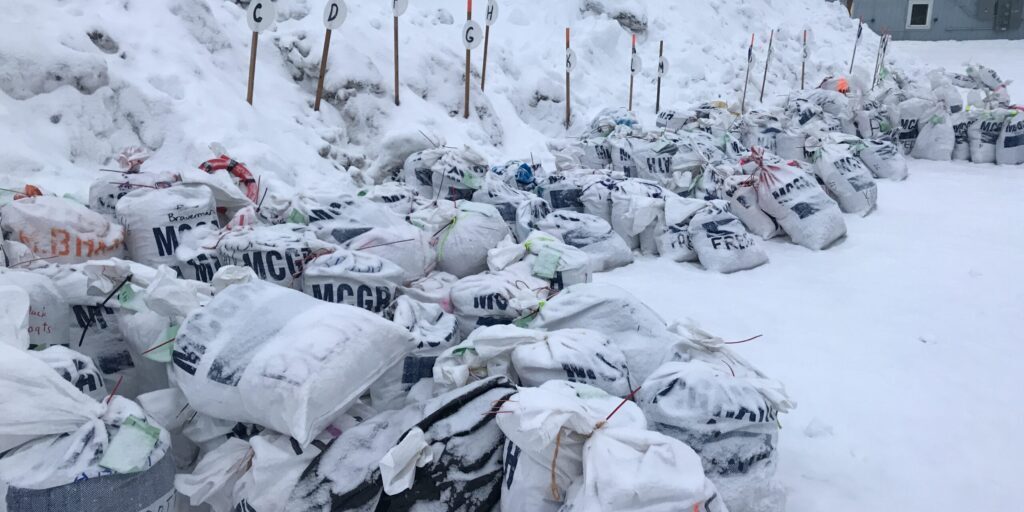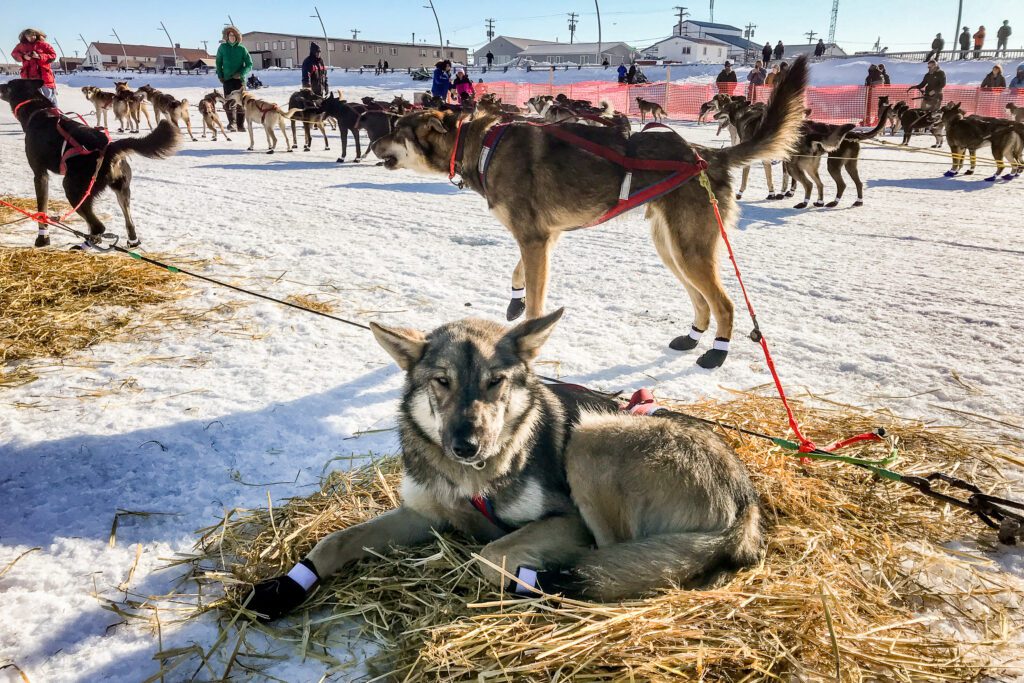Top Iditarod mushers have 300 miles of trail behind them and are gearing up for the push through the emptiest parts of trail.
Mushers are navigating warm temperatures and inconsistent trails as they race deep into the heart of Alaska’s Interior.
Nic Petit was first into the McGrath checkpoint.
“So, what’s your plan?”
“I’m going to hang out until I know what my plan is.”
“Ok, sounds good.”
Petit’s afternoon arrival appears to mark the fastest trip to McGrath on the Iditarod books. Now that mushers are being to take their 24-hour rests at a checkpoint of their choosing, Petit wasn’t speaking openly about his plans.
“At least a couple (or) 3 hours, maybe 24, we’ll see.”
Petit parked in a secluded spot in the trees, one that the checkpoint crew typically saves for teams doing their 24-hour rest. For being the first to McGrath, Petit wins the Sprit of Iditarod award, with beaded beaver mittens and a musher hat sewn by local residents.
Petit fed his team of 14 dogs frozen meat snacks and chicken skins before the main soupy meal. The Girdwood musher has been camping the entire race; he hadn’t stopped in any checkpoint for more than a few minutes.
“Rainy Pass is a zoo. I can’t get any rest when all the nice people are trying to talk to you. I mean, they’re nice, but it’s not really constructive.”
Petit has said in the past that he allows his team to run at the speed they want to. In today’s run, he said he reached a blistering 15 miles per hour. But his competition was moving fast, too.
While Petit’s team rested in the late afternoon hour, three teams flew through the checkpoint. First was Joar Leifseth Ulsom. Jessie Royer and Pete Kaiser were next through. Aliy Zirkle stopped for what she expected to be a few hours and emptied fuel into a cooker to heat water. She’s been working hard to keep her team hydrated in warm daytime runs.
Zirkle says the trail has alternated between good and soft.
“For all the talk of tons of snow and this is going to be a slog, it hasn’t been that bad, but things can always be badder. Worse.”
Into the third day of racing, mushers need to be thinking about about taking care of their mental and physical state, something that Zirkle was determined to work on during her brief stopover.
“The only thing I’m missing is sleep; I need to sleep a little bit. I’ve had the opportunity, but for some reason, my body has been ‘you’re good; you don’t need any,’ which isn’t true.”
As for her 24 plans, she says she’s going all the way to Iditarod (checkpoint) this year, some 120 miles down the trail.
When past champion Mitch Seavey arrived later in the evening, his decades of experience told him that something was different on the way in.
“It felt like that was an extra long route. It was an extra long route.”
Iditarod trail breakers placed the hundreds of reflective stakes along the Iron Dog snow machine route instead of the normal Iditarod route. That took teams on a long oxbow bend of the Kuskokwim River, tacking on 8 miles more than the mushers planned. And plan as they may, it’s now decision time on where to take their crucial, 24-hour breaks and ready their teams for the long march to the Yukon River.
Image at top: Drop bags (containing necessary supplies) await mushers at the McGrath checkpoint. Photo: Ben Matheson, KNOM.







